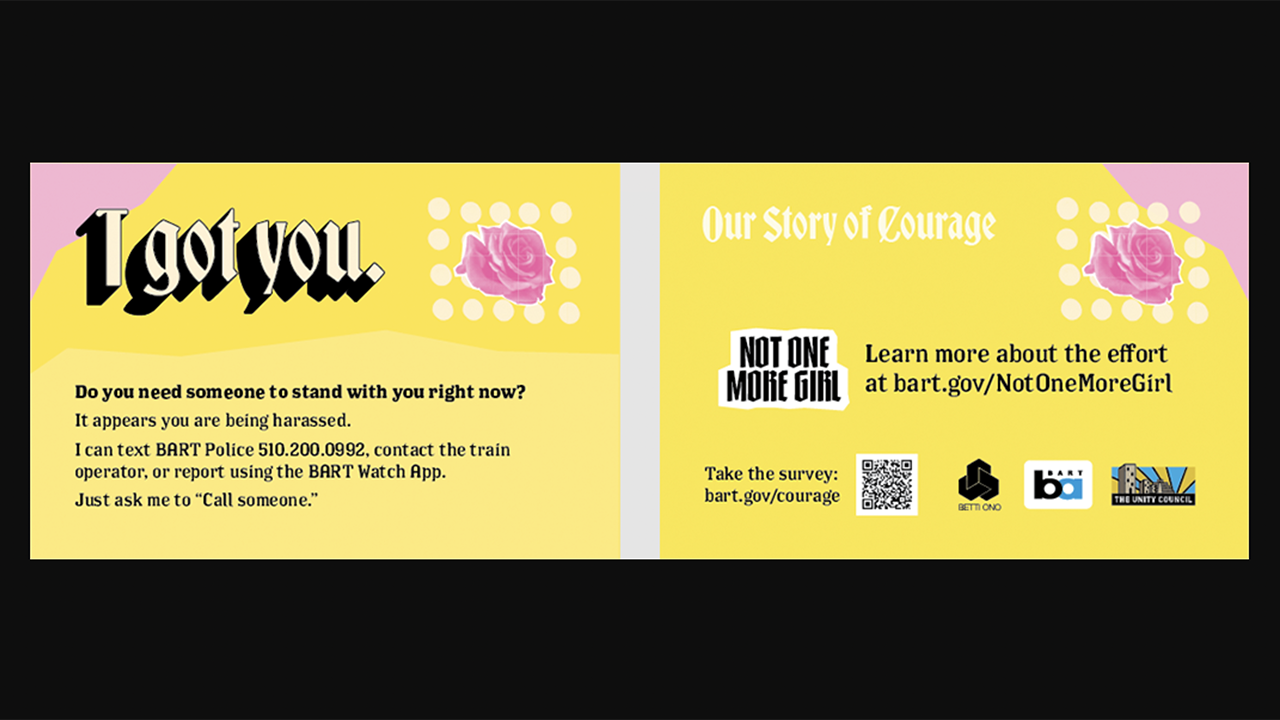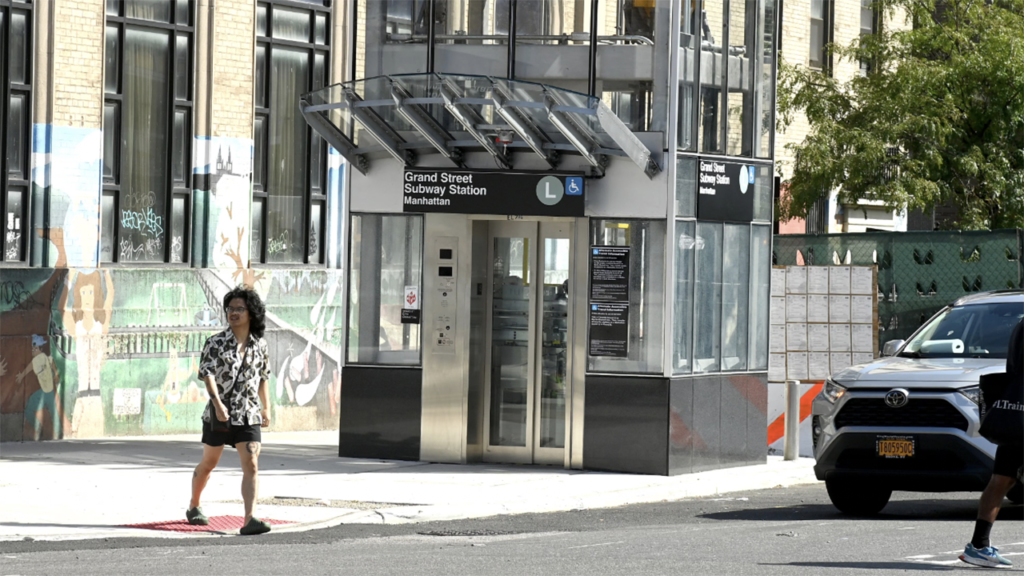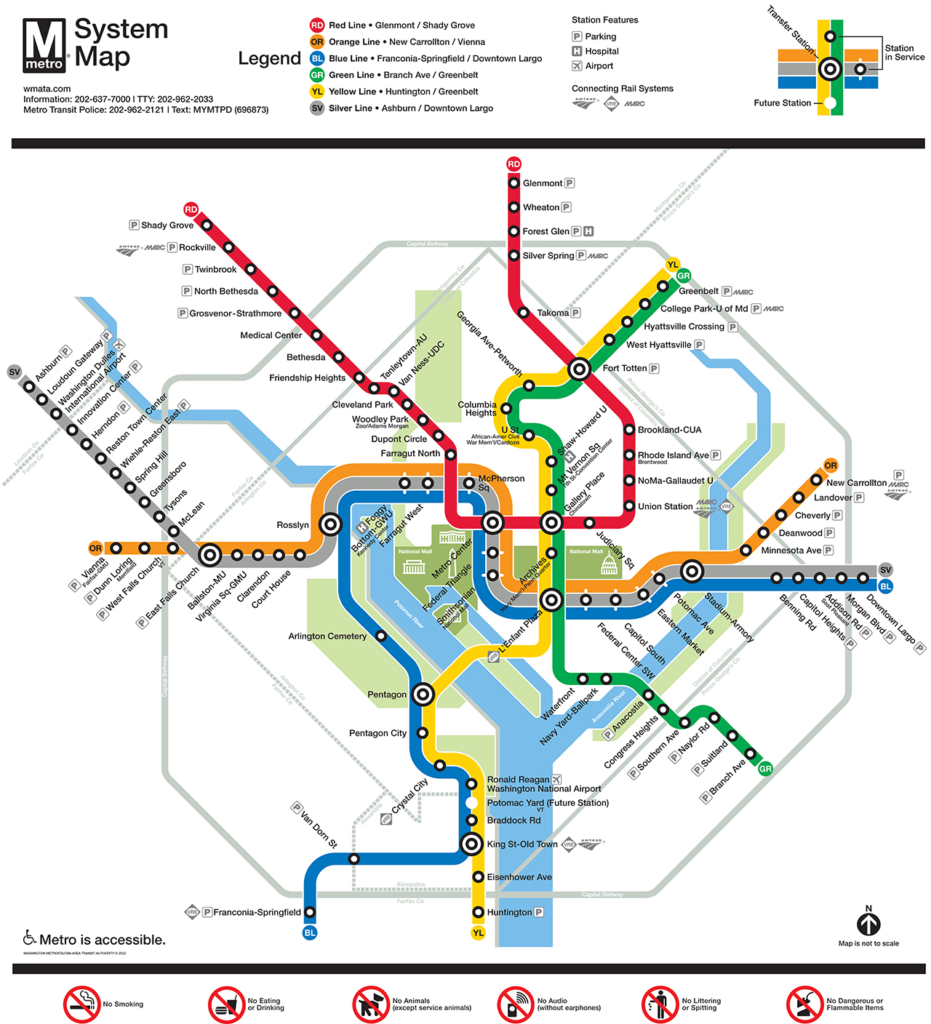
Transit Briefs: BART, NYMTA, WMATA
Written by Marybeth Luczak, Executive Editor
The second phase of BART’s “Not One More Girl” safety initiative includes bystander intervention cards, like the “I Got You” card pictured above (front shown at left; back, right).
San Francisco Bay Area Rapid Transit (BART) District launches phase two of the “Not One More Girl” safety initiative. Also, New York Metropolitan Transportation Authority (MTA) advances subway accessibility projects; and Washington Metropolitan Area Transit Authority (WMATA) reopens four Green Line stations.
BART
The “Not One More Girl“ initiative that addresses sexual harassment and gender-based violence on BART is expanding with new support strategies, according to BART. (Girls, BART said, refers to gender-expansive young people, including cis girls, trans girls, non-binary youth, gender nonconforming youth, gender queer youth and any girl-identified youth.)
Launched in 2021, the BIPOC youth-led initiative is run in partnership with community-based organizations and BART to end gender-based violence. Its second phase will educate the public about “safe bystander intervention” as a method of preventing and interrupting harassment and provide tools that riders can use to offer support when harassment occurs, BART reported.
The new tools are from BART, The Betti Ono Foundation, and The Unity Council’s Latina Mentorship and Achievement Program, which worked together to engage local high school and college students about their experiences on transit and their ideas for “action-based strategies” to enhance safety and to support people experiencing sexual harassment on transit, according to the transit agency. The Betti Ono Foundation also developed an Arts & Civic Engagement Fellowship for transitional-age young people (ages 16-24); they curated the theme, “Our Story of Courage,” for this phase of “Not One More Girl“ initiative.
The second phase includes:
- Three distinct art posters that outline steps people can take if they witness or experience harassment; that promote the use of the BART Watch app and train operator call boxes for reporting; and that offer safety suggestions, such as sitting in the first railcar near the train operator. (download an example below). According to BART, 300 posters will be installed on railcars and 60 in stations.
- Two distinct wallet-size cards (download an example below), which are available to riders “to discreetly pass to people to prompt bystander intervention actions and report harassment when it is taking place,” BART reported. The cards include the slogans “I Got You” and “You Got Me?” with a list of actionable items riders can take—from reporting the harassment to simply standing with someone. “As young people are still trying to find their voices and figuring out how to navigate and decipher harassment, a physical card you can hand someone is an effective tool to precipitate the shift from being a bystander to becoming an agent of change,” BART reported. The cards are available at all station agent booths and are being distributed by BART Ambassadors and Crisis Intervention Specialists. BART and the Betti Ono Foundation will also work to distribute the cards to young people through community organizations, events and schools.
BART said beginning Sept. 11, it will run shorter trains to eliminate empty cars, “where girls fear being targeted for harassment and assault.” It will also increases service on nights and weekends, so riders spend less time waiting on platforms.
Additionally, BART said it will work with the Alliance for Girls in FY 2024 to develop a “youth-informed BART rider safety evaluation framework, as it pertains to sexual harassment, to define safety metrics and evaluation strategies that will guide BART’s preventative and interventional safety efforts.” And it will develop and roll out training for frontline staff “to give them tools on how best to handle situations involving riders experiencing trauma from harassment and gender-based violence, with a special focus on engaging marginalized community members.”
“A big part of harassment is the devaluing of another person,” said Karol Suarez, a senior at Oakland School of the Arts, who served as a youth fellow guiding the second phase of the “Not One More Girl” initiative. “And in this culture, we often don’t value people’s voices, especially women, especially women of color. This project understands the importance of making people feel comfortable on public transit, a place that is meant for everyone. Being a part of this has made me hopeful; it shows me we’re not that messed up as a society. Even this small group is making a big impact.”
“As BART is working to rebuild ridership and gain trust within the communities we serve, focusing on the safety of girls helps us explore ways to improve the safety for all riders,” said Alicia Trost, Chief Communications Officer at BART. “When speaking to students during this phase of engagement, we frequently heard the youth had never used BART because their parents wouldn’t let them. It gets to the deep-rooted fears people have about transit. As mobility providers, we must do better. We can’t be successful if we can’t meet the basic needs of our most vulnerable riders. This work is pivotal for ridership recovery as we reimagine service and roll out new data-driven approaches to safety.”
“The ability to craft this initiative with artists playing a key role in giving voice to the work of the youth and to bring the message to our community of riders is a central tenet of the BART Art Program, which brings artists to the table as problem solvers,” said Jennifer Easton, Art Program Manager at BART. “Whether the question is rider safety, enhancing station environments and access, connecting with local communities, or looking at sustainability with a creative lens, artists can serve a critical role in delivering important solutions for transit. Collaborating on the ‘Not One More Girl’ initiative with community partners that understand the importance of art as a tool for achieving the critical goals around safety for girls demonstrates the value of nontraditional strategies.”
NYMTA

MTA last month completed its fourth subway accessibility project of the year. The Grand St L station in Williamsburg, Brooklyn, is now fully accessible. The Court Square G station in Queens, Dyckman St 1 station in Upper Manhattan, and 8 Ave N station in Brooklyn opened in July.
The Grand St L station project was funded by a Federal Transit Administration (FTA) grant. In June, as part of the station’s accessibility design-build package, MTA Arts & Design announced new mosaic artwork commissioned by artist Glendalys Medina, Gratitudes Off Grand. The resulting work comprises geometric forms–circles, diamonds, squares and rectangles—reflecting the artist’s practice inspired by Taíno, hip-hop and Latino cultures and music, according to the transit agency.
“The pace in which the MTA is awarding contracts for accessibility projects is five times what it was before 2020,” MTA reported. “The MTA has awarded contracts for 13 stations in 2020, 10 stations in 2021, 13 stations in 2022, and previously announced its plan to award contracts for 17 stations by the end of the year.”
During the height of the COVID-19 pandemic when ridership significantly decreased, MTA said it prioritized expanding accessibility improvements in the subway by completing 15 projects. There are now 142 accessible stations and 30 stations in construction for accessibility upgrades, eight of which are expected to be complete by the end of this year. Those stations are:
- 181 St (A)
- Tremont Av (B, D)
- E 149 St (6)
- Lorimer St (L)
- Metropolitan Av (G)
- 7 Av (F, G)
- Beach-67 St (A)
- New Dorp (MTA Staten Island Railway)
“We’re excited to welcome Brooklyn L customers to their new, accessible station, which also has also been enhanced with freshly installed eye-catching mosaic artwork by a local Brooklyn-based artist,” MTA New York City Transit President Richard Davey said. “This has been a summer full of accessibility milestones in the system, from enhanced wayfinding for customers with disabilities [across 11 subway stations and 24 stops along the M60 bus route in Manhattan] to a number of newly accessible subway stations. We will keep up this momentum, and I look forward to celebrating several more accessible stations opening later in 2023.”
“I’m proud to join my MTA colleagues in opening two new elevators at the Grand St L station, making it the first accessible station in East Williamsburg, as the journey continues to make transit more accessible for everyone including riders with disabilities, seniors, families with strollers, and visitors,” MTA Chief Accessibility Officer and Senior Advisor Quemuel Arroyo said. “Just over a year ago, the MTA joined accessibility advocates to celebrate a settlement that affirmed we’re all committed to the shared goal to expand accessibility across our subway system, and that continues to materialize, one station at a time.”
WMATA

WMATA on Sept. 2 reopened the Greenbelt, College Park-U of Md, Hyattsville Crossing, and West Hyattsville stations to Green Line rapid transit service. The stations had been closed since July 22 to allow the transit authority to install more than 220,000 linear feet of fiber-optic cable to improve radio and signal capabilities and to provide the infrastructure needed for future upgrades, such as communications-based train control. Because the cables are housed in the middle of the two tracks, construction crews could only complete the work while both tracks were out of service.
During the fiber-optic cable installation, crews replaced 8,000 feet of rail, 900 rail fasteners and 1,250 wood crossties; resurfaced 20,000 feet of track; and removed 60,000 feet of vegetation along the tracks to improve safety.
“We are proud of the important infrastructure improvements we made this summer, which will benefit our customers with more reliable and timely service for years to come,” WMATA Chief of Infrastructure Andy Off said. “We thank our customers for their patience as we completed this necessary work ahead of schedule and under budget to modernize our rail system.”
Among WMATA’s other summer construction highlights:
- On the eastern end of the Orange Line in Maryland, structural work and roof waterproofing on canopies at the Minnesota Ave, Deanwood, and Cheverly stations were completed by installing more than 20,000 square feet of new roofing. This provides more than 4,200 customers daily protection from the elements.
- On the western end of the Orange Line in Virginia, crews installed 26 miles of new rail between Ballston-MU and Vienna stations. The new rail replaced the original 40-year-old rail. Crews also replaced two diamond interlockings on the Orange Line.



